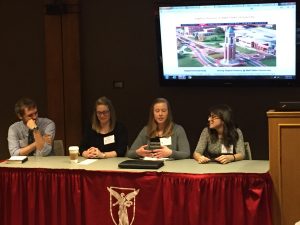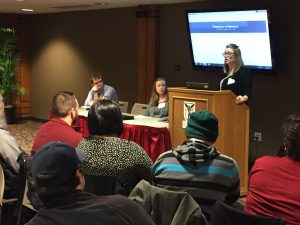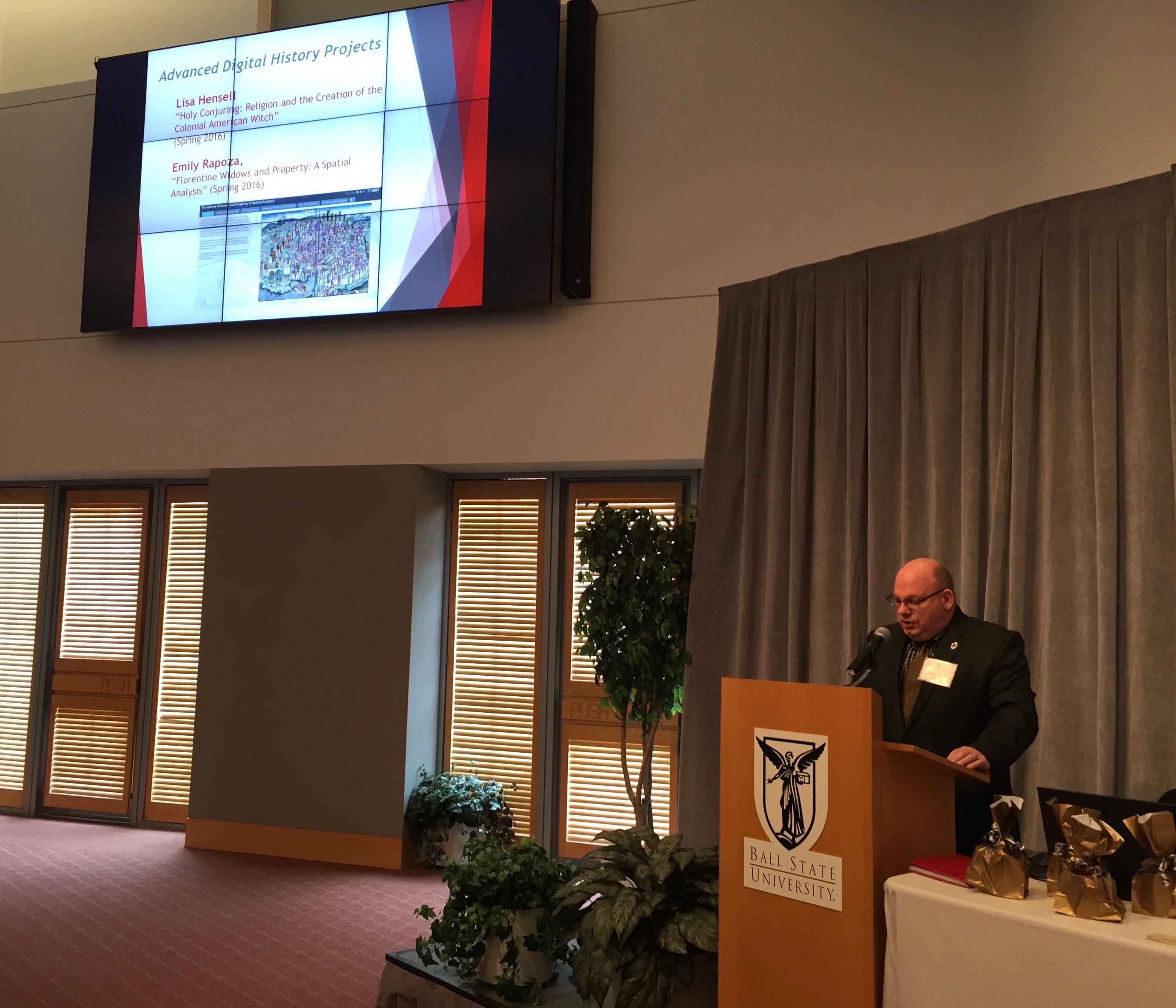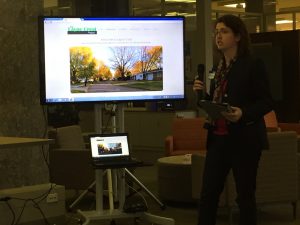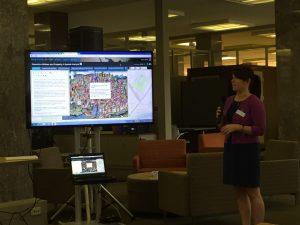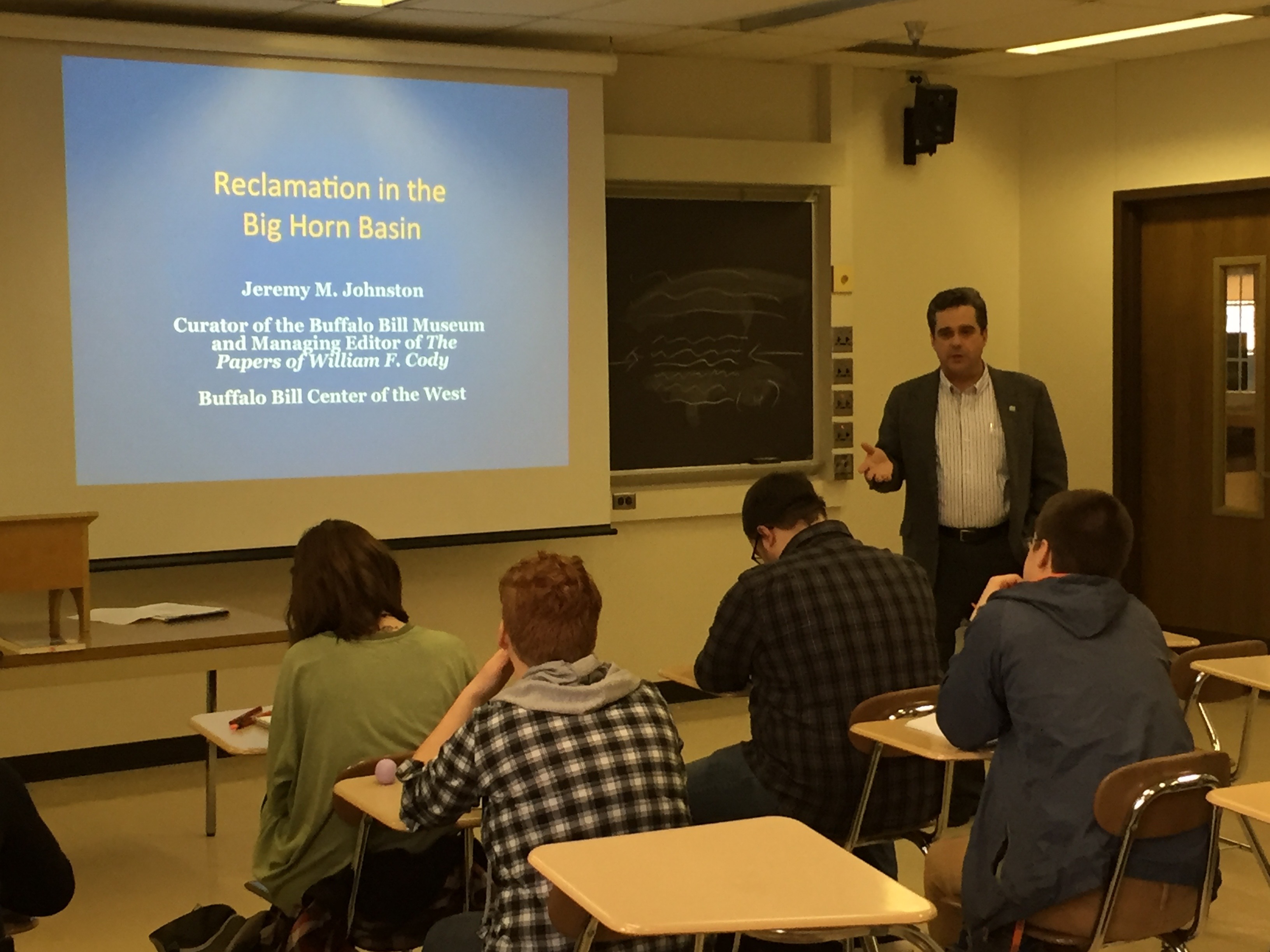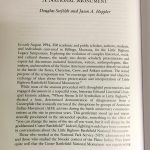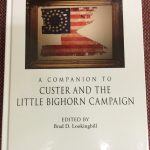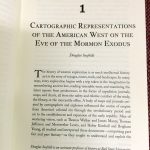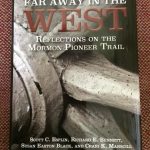A nice feature by a student journalist Mary Freda on the work my History in the Digital Age class is doing with the Ball State University Libraries’ Archives and Special Collections folks.
Author Archives: admin
Digital History Panel at Ball State University Student History Conference
I chaired a panel at the 19th Annual Department of History Student History Conference on Friday, February 26, 2016 at Ball State University titled, “Doing Digital History.” The panel included current M.A. students Lisa Hensell and Hayden Shaw and graduate alumna Katina Reedy and Sadie Ritchie presenting their digital history research projects from my HIST 661: Digital History Seminar.
- Lisa Hensell, “Under Connecticut’s Spell: Witch Trials in Colonial Connecticut, 1647-1697”
- Katina Reedy, “’No one is going to get cakes and ale’: Women’s Perceptions of Food Rationing in WWII”
- Sadie Ritchie, “Prisoners of Memory: Camp Morton, Indiana, 1862-1865”
- Hayden Shaw, “The Ring of the World: A Critical Edition of Snorri Sturluson’s the Saga of Harald Hardrada”
- From left to right: Hayden Shaw, Sadie Ritchie, Katina Reedy, Lisa Hensell presenting their HIST 661 digital history seminar research at the 19th Annual Ball State University Student History Conference on February 26, 2016.
- Sadie Ritchie
- Hayden Shaw
Ball State History Graduate Students Recognized for Advanced Digital History Projects
At the Ball State University Department of History Honors, Scholarships, and Recognition Ceremony held on Sunday, April 10, 2016, I had the honor of recognizing two graduate students who had created advanced digital history projects as part of their M.A. degrees. These student projects contribute to a campus-wide initiative in digital scholarship and immersive learning that is aimed in large measure at cultivating a collaborative culture of innovation, experimentation, and inquiry at Ball State University.
- Lisa M. Hensell, “Holy conjuring : religion and the creation of the colonial American witch, 1647-1706” (CRPR 698 Faculty Advisor: Douglas Seefeldt)
- Emily Rapoza, “Florentine Widows and Property: A Spatial Analysis” (CRPR 698 Faculty Advisors: Jennifer DeSilva & Douglas Seefeldt)
BSU Graduate Students Participate in THATCamp Indiana 2016
Seven Ball State graduate students and I made the over 2-1/2-hour drive up to South Bend to participate in THATCamp Indiana 2016 held at the Center for Digital Scholarship in the Hesburgh Library on the campus of the University of Notre Dame on April 22, 2016.
- Ball State University Historic Preservation graduate student Margaux Dever, presents a “Dork Short” on the digital component of her M.S. thesis.
- Ball State University History graduate student Emily Rapoza, presents a “Dork Short” on the digital component of her M.A. creative project.
Historic preservation graduate student Margaux Dever presented a “Dork Short” (also known as a “lightning talk,” a Dork Short is brief 2-3-minute presentation in which attendees discuss current or upcoming projects, demonstrate new tools, or call for collaborators) on the topic “Interpreting Historic Districts Digitally” and history graduate student Emily Rapoza presented on the topic “Italian Renaissance Widows Through Spatial Analysis.” I presented on “Virtual Buffalo Bill’s Wild West” along with other digital humanists either presenting Dork Shorts or leading discussion sessions on topics of interest to those attending this “unconference.” Also attending THATCamp Indiana 2016 from Ball State University were history graduate students Ashley Cornwell, Samantha Greulach, Ashley Purvis, Alexis Robertson, and Joe Sweet. A good time was had by all!
Historian Jeremy Johnston visits Ball State U. Class
Last April, western historian Jeremy Johnston joined my HIST 318/518: History of the American West class on Friday, April 1, 2016 to discuss William F. “Buffalo Bill” Cody’s role in reclamation in the American West.
Jeremy M. Johnston is the Hal and Naoma Tate Endowed Chair and Curator of Western History, the Ernest J. Goppert Curator of the Buffalo Bill Museum, and, the Managing Editor of the Papers of William F. Cody at the Buffalo Bill Center of the West. He was born and raised in Powell, Wyoming, a reclamation town named for John Wesley Powell. Johnston attended the University of Wyoming, from which he received his bachelor of arts his master of arts. He taught history at Northwest College in Powell for more than fifteen years. He is a past president of the Wyoming State Historical Society, and has appeared on various Wyoming PBS documentaries.
Johnston’s scholarship has appeared in the journals Annals of Wyoming, Colorado Heritage, the Center of the West’s own magazine Points West, Readings of Wyoming History, the George Wright Forum, and Yellowstone Science. He released his first book, a photo history of Powell, Wyoming, in 2009, followed by a “then and now” photo history in 2012. Johnston is the recipient of the 2006 Coke Wood Award, sponsored by Westerners International, for his article “Progressivism Comes to Yellowstone: Theodore Roosevelt and Professional Land Management Agencies in the Yellowstone Ecosystem.” A PhD candidate at the University of Strathclyde in Glasgow, Scotland, Johnston is finishing his doctoral dissertation examining the connections between Theodore Roosevelt and William F. “Buffalo Bill” Cody. Collaborating with Dr. Charles Preston of the Center’s Draper Natural History Museum, he published an annotated version of Ernest Thompson-Seton’s Wahb: The Biography of a Grizzly, recently published by University of Oklahoma Press. Johnston is working on an edited edition of George W. T. Beck’s unpublished memoirs that detail Beck’s ranching ventures in Wyoming and his efforts to establish a reclamation project with Buffalo Bill that resulted in the founding of the town of Cody, Wyoming.
Ernie LaPointe, Great-grandson of Sitting Bull, visits Ball State U. class
On Monday, September 19 and Tuesday, September 20, 2016, Ernie LaPointe, a Great-grandson to Hunkpapa Lakota chief Sitting Bull, visited Ball State University to give a public talk and to speak with students. On Tuesday afternoon he visited my HIST/NREM 204: U.S. Environmental History course where he spoke on the topic, “Live in Tune with Mother Earth.”
Mr. LaPointe, author of the book, Sitting Bull: His Life and Legacy (2009) and the producer of the documentary film, Sitting Bull’s Voice (2013), shared his Lakota cultural perspective on both the history of human relationships with the natural world and the precarious future facing the human race if it does not heed the wisdom of the ancient knowledge carefully curated by the First Nation peoples and make changes in order to “live in tune with Mother Earth.”
LaPointe is the president and founder of the Sitting Bull Family Foundation, and he and his wife Sonja travel across the U.S. and abroad sharing the history of Sitting Bull and the cultural heritage of the Lakota people.
Historian Elizabeth Tandy Shermer visits Ball State U. history class
On May 2, 2016, historian Elizabeth Tandy Shermer made a “Virtual Visit” to my HIST 318/518: History of the American West course to discuss her book that I had assigned that semester, Sunbelt Capitalism: Phoenix and the Transformation of American Politics (2013). The students certainly found the political development that Shermer describes in her book to be particularly relevant to their understanding of the more recent history of the American West, but also to their understanding of national current events that are front and center during this presidential election year.
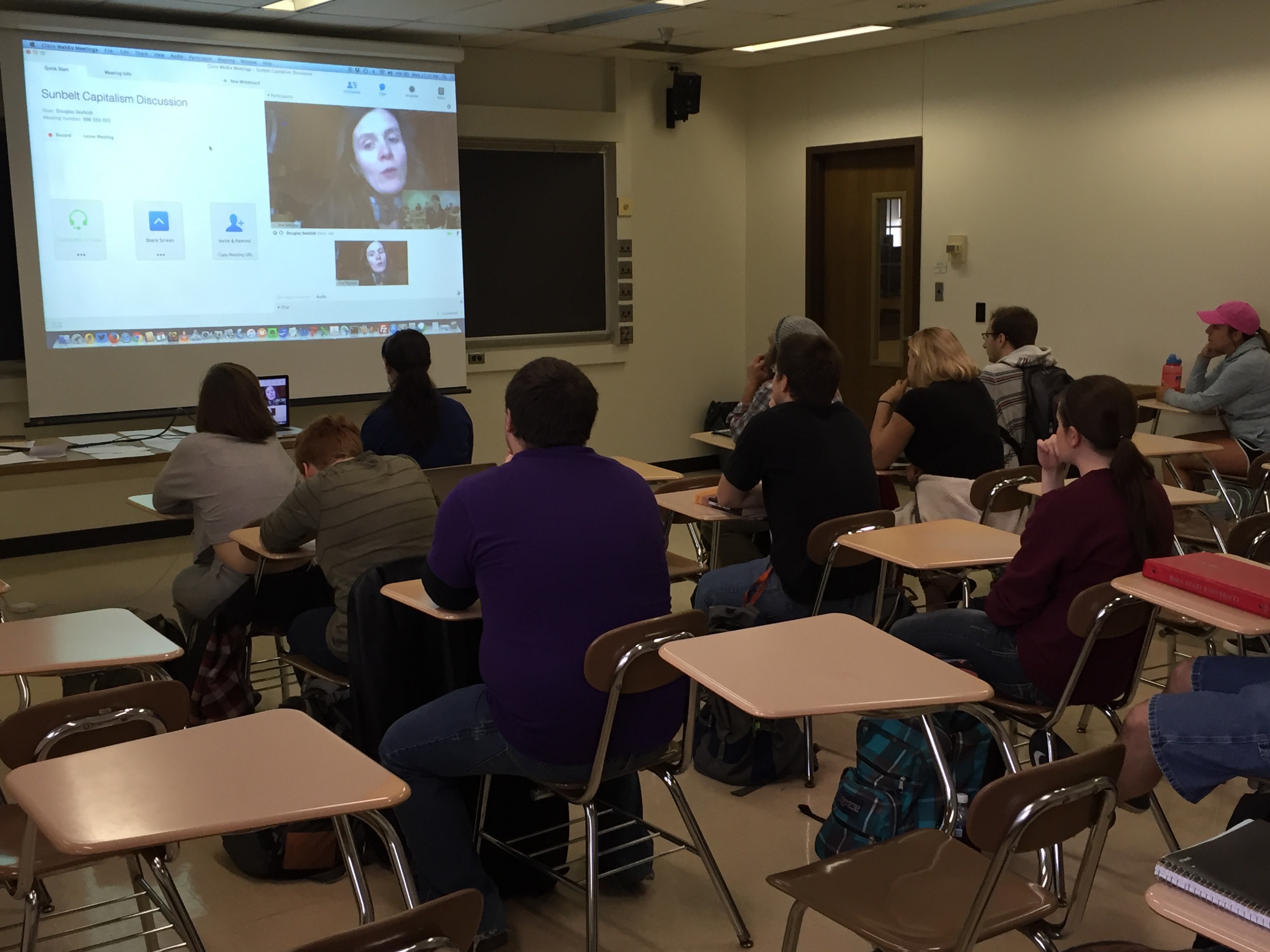
Some students asked professor Shermer questions about why she chose to focus on Phoenix, Arizona and how long it took her to conduct the research and then write the book. Other students asked her if she believed that the rise of Western conservatism halted the progress of the civil rights movement, and to share her thoughts as to whether the rapid growth of Phoenix and other sunbelt cities will be sustainable. This was an exciting opportunity for these Indiana students-most of whom have never been to the west-to meet the author and to discuss her book.
Fun fact: Ellie was my first-ever research assistant when I was a post-doc at the University of Virginia and now she’s an award-winning professor at Loyola University in Chicago! They grow up so fast… 😉
Historian Will Bagley visits Ball State U. history class
Last February, western historian Will Bagley joined my HIST 318/518: History of the American West class to discuss his recent book that I had assigned, South Pass: Gateway to a Continent (2014). Bagley regaled them with his fascinating stories from the “history salt mines” in a way that only he can.
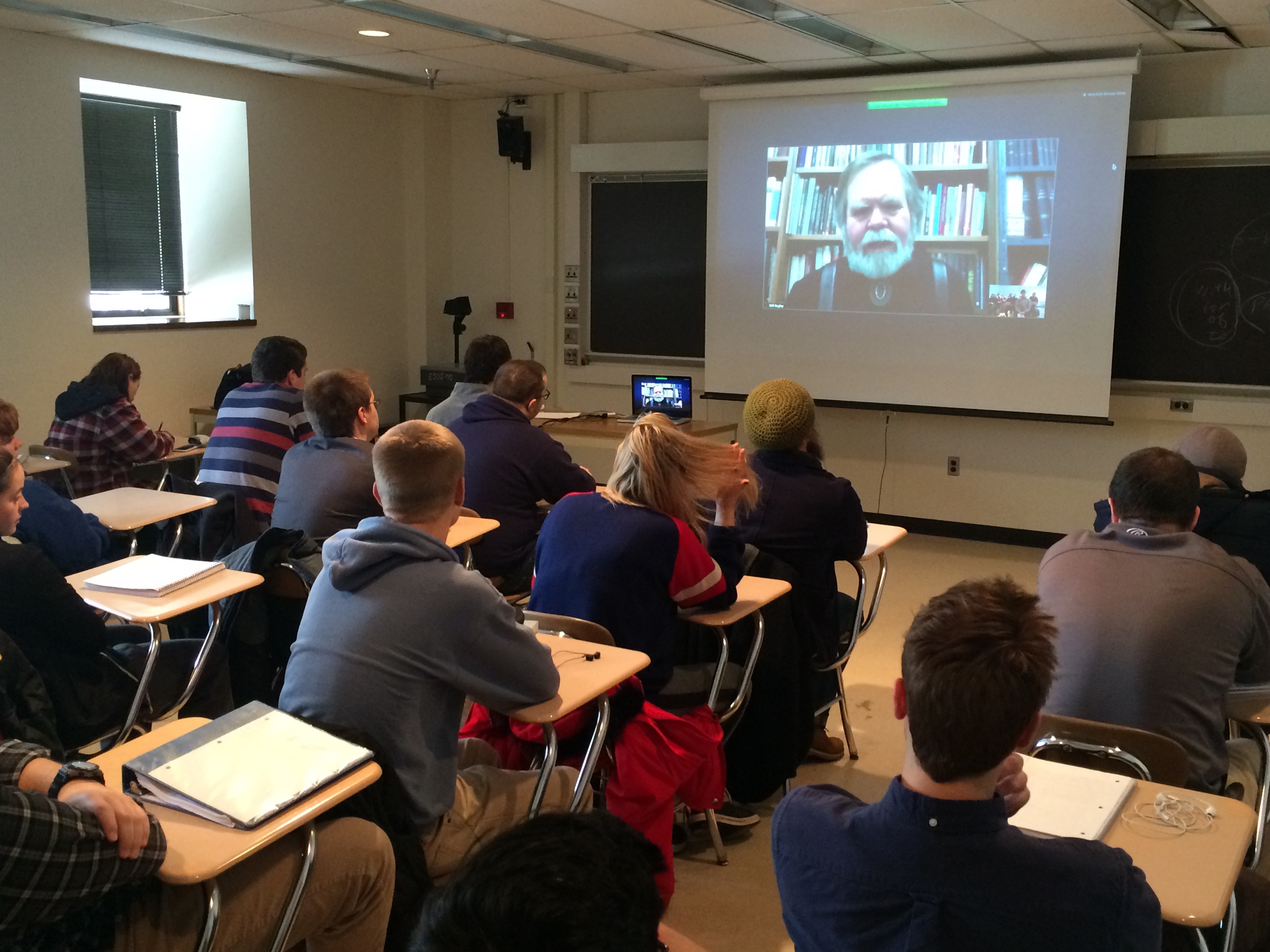
The students asked him questions ranging from how he began research for the book and how long it took him to write it, to if he personally visited South Pass and the Oregon Trail, and whether he thought that South Pass could also be interpreted as a monument to American capitalism. This terrific opportunity for students to meet the author resulted in the class period flying by!
But Wait…There’s More!
- An essay that I co-authored with Jason Heppler
- A collection of original essays that contains a piece I co-authored.
Arriving in my mailbox on the same day as the other volume, A Companion to Custer and the Little Bighorn Campaign contains a long essay, “A National Monument,” that I researched and wrote in collaboration with a former UNL graduate advisee Jason Heppler. This is another examination of history and memory in an important landscape in the American West similar to my earlier journal articles on sites in New Mexico and Arizona. In addition to using traditional research methods, Jason and I also employed Digital Humanities text analysis tools to investigate the topics and rhetoric contained in two of the three editions of the official interpretive handbook for the Little Bighorn battlefield National Monument site. I hope that students of the history of the United States, the American West, and History & Memory, along with those who are fascinated with the Native American experience and the mythic figure of George Armstrong Custer, will find this piece a welcome contribution to that voluminous historiography.
This Just In…
- Douglas Seefeldt, “Cartographic Representations of the American West on the Eve of the Mormon Exodus”
- My essay, “Cartographic Representations of the American West on the Eve of the Mormon Exodus” appears in this collection.
What began as an invited lecture to speak to the faculty of Brigham Young University’s Religious Studies Center in Omaha, NE along the Mormon Pioneer National Historic Trail in the summer of 2012 has just been published! As the lead essay in this collection of twelve pieces, I trace the cartographic ideas of the Far West around the time of the Mormon exodus from Illinois to Utah in the mid-nineteenth century. The essay examines the significant works of cartography featuring the American West created just after the Lewis and Clark expedition through the constitution of the State of Deseret in 1849. These are the depictions of the region that Church leadership used to establish the stake of Zion, the settlement of the Great Basin, the proposed State of Deseret, the creation of Utah Territory, and eventually the state of Utah. I am pleased to see it in print and hope that it is of use to those who study cartography, Mormon history, the American West, and United States history.
